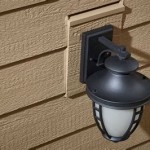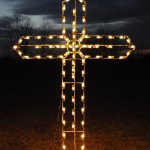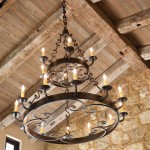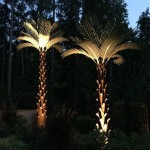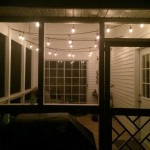Camper Trailer Outdoor Lighting Systems: Illuminating Your Adventure
Outdoor lighting systems are indispensable for camper trailers, enhancing safety, functionality, and ambiance at campsites. Selecting the optimal lighting system requires consideration of various factors, including power source, light output, durability, and intended use. This article provides an in-depth examination of camper trailer outdoor lighting systems, covering key components, types, selection criteria, installation, and maintenance.
Understanding the Importance of Outdoor Lighting
Effective outdoor lighting extends the usability of a campsite beyond daylight hours. It significantly improves safety by illuminating pathways, preventing trips and falls, and deterring wildlife. Additionally, outdoor lighting facilitates tasks such as cooking, preparing gear, and socializing after dark. The right lighting system can transform a campsite into a comfortable and inviting outdoor living space.
Beyond pure functionality, well-chosen outdoor lighting contributes to the overall camping experience. Soft, ambient lighting can create a relaxing atmosphere, while task lighting can provide focused illumination for specific activities. Proper lighting design enhances the aesthetics of the campsite and promotes a sense of security and well-being.
Different camping scenarios demand different lighting solutions. A weekend family camping trip might prioritize general area lighting for socializing and cooking, while a solo backcountry adventure may necessitate lightweight, portable lighting for navigation and emergency situations. Understanding these varying needs is crucial in selecting the appropriate lighting system.
Key Components of a Camper Trailer Outdoor Lighting System
A complete outdoor lighting system typically comprises several key components, each playing a distinct role in providing illumination. These components include light fixtures, power sources, wiring, and control mechanisms.
Light Fixtures: Light fixtures are the primary source of illumination, and are available in a wide range of styles and technologies. Light-emitting diodes (LEDs) are the most common choice due to their energy efficiency, long lifespan, and durability. Other options include incandescent, halogen, and fluorescent lights, though these are less prevalent in modern camper trailers due to their higher power consumption and shorter lifespan.
Power Sources: The power source provides the electrical energy needed to operate the light fixtures. Common power sources for camper trailers include the trailer's battery, a generator, or a portable power station. The trailer's battery is the most convenient option, but its capacity must be sufficient to power the lighting system for extended periods. Generators offer greater power output but are noisier and require fuel. Portable power stations provide a balance of power, portability, and quiet operation.
Wiring: Wiring connects the power source to the light fixtures, transmitting electrical current. The wiring must be appropriately sized to handle the electrical load of the lighting system and must be protected from the elements. Waterproof connectors and conduits are essential for ensuring the reliability and safety of the wiring system.
Control Mechanisms: Control mechanisms allow users to adjust the brightness and function of the lighting system. Switches, dimmers, and remote controls are common control options. Dimmers provide greater control over light output, allowing for adjustment to suit different activities and moods. Remote controls offer convenient operation from a distance.
Types of Outdoor Lighting for Camper Trailers
Numerous types of outdoor lighting are suitable for camper trailers, each offering distinct advantages and disadvantages. These types include awning lights, porch lights, floodlights, string lights, and portable lights.
Awning Lights: Awning lights are typically mounted beneath the camper trailer's awning, providing general area illumination for socializing, cooking, and relaxing. LED strip lights are a popular choice for awning lighting due to their flexibility, energy efficiency, and ease of installation. Awning lights often feature dimming capabilities to adjust the brightness level to suit the desired ambiance.
Porch Lights: Porch lights are typically mounted near the entrance of the camper trailer, providing illumination for entry and exit. They enhance safety by lighting the steps and surrounding area, reducing the risk of falls. Porch lights are often equipped with motion sensors to automatically turn on when movement is detected, providing added security and convenience.
Floodlights: Floodlights provide a wide beam of intense light, ideal for illuminating large areas such as parking spaces or campsites. They are particularly useful for security purposes and for tasks requiring high levels of visibility. LED floodlights are energy-efficient and durable, making them a suitable choice for camper trailer applications.
String Lights: String lights are decorative lights that add ambiance and visual appeal to a campsite. They are available in a variety of styles and colors, allowing for customization to suit individual preferences. LED string lights are energy-efficient and long-lasting, making them suitable for extended use. String lights are often used to outline awnings, trees, or other campsite features.
Portable Lights: Portable lights offer flexibility and versatility, allowing users to direct light where it is needed most. Headlamps, flashlights, and lanterns are common types of portable lights. Headlamps are particularly useful for hands-free operation, while flashlights provide focused illumination for tasks such as navigating trails. Lanterns provide ambient light for general area illumination.
Selecting the Right Outdoor Lighting System
Selecting the optimal outdoor lighting system requires careful consideration of several factors, including power consumption, light output, durability, weather resistance, and ease of installation and maintenance.
Power Consumption: Power consumption is a critical factor, especially when relying on the camper trailer's battery for power. LED lights are significantly more energy-efficient than incandescent or halogen lights, consuming less power for the same light output. Choosing LED lights can extend the battery life and reduce the need for frequent recharging or generator use.
Light Output: Light output is measured in lumens, which indicates the total amount of light emitted by a light source. The required light output depends on the intended use of the lighting system. General area lighting typically requires lower lumen output than task lighting or security lighting. Consider the size of the area to be illuminated and the desired level of brightness when selecting light fixtures.
Durability: Durability is essential for outdoor lighting systems, as they are exposed to harsh weather conditions and potential physical damage. Choose light fixtures made from durable materials such as aluminum, stainless steel, or impact-resistant plastic. Look for fixtures with sealed housings to protect against moisture and dust.
Weather Resistance: Weather resistance is crucial for ensuring the longevity and reliability of the lighting system. Choose light fixtures that are rated for outdoor use and are resistant to rain, snow, and UV radiation. Waterproof connectors and wiring are essential for preventing corrosion and electrical shorts.
Ease of Installation and Maintenance: Ease of installation and maintenance is an important consideration, especially for those with limited technical skills. Choose light fixtures that are easy to install and require minimal maintenance. Look for modular systems that allow for easy replacement of individual components. Regularly inspect the lighting system for any signs of damage or wear and tear, and replace any damaged components promptly.
Installation and Maintenance Tips
Proper installation and maintenance are crucial for ensuring the performance and longevity of a camper trailer outdoor lighting system.
Installation: Follow the manufacturer's instructions carefully when installing light fixtures and wiring. Ensure that all connections are secure and waterproof. Use appropriate tools and safety equipment. If unsure about any aspect of the installation process, consult a qualified electrician. Consider the placement of lights to minimize glare and maximize illumination. Avoid placing lights in areas where they could be easily damaged or obstructed.
Maintenance: Regularly inspect the lighting system for any signs of damage or wear and tear. Clean light fixtures regularly to remove dirt and debris. Replace any damaged or burnt-out bulbs promptly. Check wiring for any signs of corrosion or damage. Use a multimeter to test for continuity and voltage. Apply dielectric grease to electrical connections to prevent corrosion. Store the lighting system properly when not in use, protecting it from extreme temperatures and moisture.
By following these installation and maintenance tips, users can ensure that their camper trailer outdoor lighting system operates reliably and efficiently for many years to come.

Oppkept Led Rv Lights Exterior With 3 Level Dimmer Switch Upgrade 12v 24v 900 Lumen Porch Light Replacement Lighting Fixtures For Rvs Trailers Campers Yacht Ip67 Waterproof Black

How To Spruce Up Your Rv With Led Strip Lights Birddog Lighting

Ceyes 12v 24v Rv Porch Lamp Led Awning Light Temu
Rgb Colour Change Led Light 12v Dc Caravan Motorhome Outdoor Lighting F45 F65 Dabhees In The

Upgraded Super Bright 12v Led Rv Porch Lights Exterior Utility Light Replacment With On Off Switch Clear And Amber Removable Lens For Trailer Camper 1 Pack

Lighting Your Outdoor Rv Kitchen Lynx Has A Light For That Camping Camper Design

Stay Safe In Your Rv While You Sleep

How To Keep A Trailer Cool In The Summer Foremost Insurance Group

Ribbon Star Max Led Strip Lights Are Used For Exterior Camper Lighting

4pack Rv Ceiling Dome Light Led High Bright 12v Interior Roof Lights With Switch For Camper Car Truck Trailer Com
Related Posts
